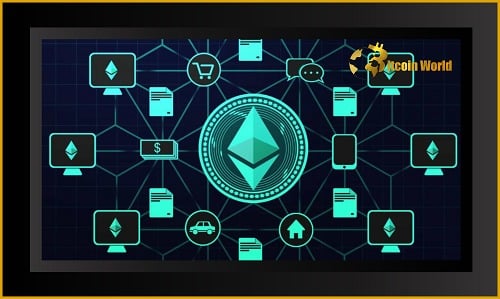Excitement is building in the crypto world as Ethereum, the second-largest cryptocurrency, gears up for its monumental shift to Proof-of-Stake (PoS). After the successful first ‘shadow fork’ rehearsal in April, all eyes are now on the second major merging test, anticipated to take place this Saturday, according to Ethereum 2.0 core developer Dapplion. This crucial step brings us closer to the long-awaited ‘Merge,’ a technical upgrade poised to revolutionize the Ethereum network. But what does this mean for you, for Ethereum, and for the future of crypto?
Ethereum’s ‘Merge’: Why All the Hype?
For those new to the crypto space, or even seasoned traders who haven’t dived deep into Ethereum’s technical roadmap, understanding the ‘Merge’ is key. Essentially, it’s Ethereum’s transition from its current Proof-of-Work (PoW) consensus mechanism to Proof-of-Stake (PoS). Think of it as swapping out the engine of a car while it’s still running – a complex and ambitious undertaking!
But why go through all this trouble? The Merge promises some game-changing benefits:
- Drastically Reduced Energy Consumption: This is arguably the biggest win. Post-Merge, Ethereum’s energy usage is projected to plummet by a staggering 99.95%. In a world increasingly conscious of environmental impact, this shift is huge.
- Enhanced Scalability (Long-Term): While the Merge itself isn’t directly focused on immediate scalability improvements, it lays the groundwork for future upgrades that will make Ethereum faster and more efficient.
- Lower Gas Fees (Eventually): While not immediate, the move to PoS and subsequent upgrades are expected to contribute to lower transaction fees, making Ethereum more accessible for everyday users and developers.
- Improved Security: Proof-of-Stake is argued by many to offer enhanced security against certain types of attacks compared to Proof-of-Work.
Second Merge Test: Decoding Dapplion’s Tweet
So, back to the present. Dapplion’s tweet signals that the second significant test of the Merge is imminent. These tests, like the ‘shadow fork’ in April, are critical rehearsals. Developers are essentially stress-testing their code and infrastructure in a live environment, albeit a test network, to identify and iron out any potential issues before the actual Merge on the main Ethereum network.
Think of it like a dress rehearsal before a major play. You want to catch any wardrobe malfunctions or stage hiccups before the curtain rises on opening night! These tests help ensure a smooth and successful transition for Ethereum.
Timeline Update: When Will the Merge Actually Happen?
Originally slated for June, the Merge timeline has been adjusted. Ethereum engineer Tim Beiko indicated that the integration would take “a few months after” June. While no firm date is set in stone, the current expectation points towards a Fall 2022 launch. Beiko reassured the community that Ethereum is in the “last chapter” of its Proof-of-Work era.
Here’s a simplified timeline to keep in mind:
| Milestone | Date/Status | Significance |
|---|---|---|
| Beacon Chain Launch | December 2020 | Launched the Proof-of-Stake backbone, allowing ETH staking in ETH2. |
| First Merge Rehearsal (Shadow Fork) | April 2022 | Initial test of Merge concepts. |
| Second Merge Test | Likely Saturday (as per Dapplion) | Further testing and refinement of the Merge process. |
| Expected Merge Date | Fall 2022 (estimated) | The actual Merge of the Beacon Chain with the main Ethereum chain. |
What Happens to Your ETH?
If you’re holding Ether (ETH), you might be wondering what the Merge means for you. Currently, ETH staked on the Beacon Chain (ETH2) cannot be converted back to the main chain ETH. This will change after the Merge. Post-Merge, the Beacon Chain will effectively become part of the main Ethereum chain, and staked ETH will eventually become accessible (though unstaking mechanisms will be rolled out in phases post-merge).
Key takeaway: For most ETH holders, no immediate action is required. The Merge is primarily a network upgrade. However, staying informed about official announcements and updates from the Ethereum Foundation is always recommended.
Environmental, Social, and Governance (ESG) Advantages
The shift to Proof-of-Stake positions Ethereum favorably in the growing ESG investing landscape. Cryptocurrencies with strong ESG profiles are anticipated to attract greater institutional and retail investment. Ethereum’s massive reduction in energy consumption addresses a major environmental concern often associated with cryptocurrencies, particularly Bitcoin and its Proof-of-Work system.
Beyond Energy: Lower Gas Fees on the Horizon?
While the Merge primarily targets consensus mechanism change and energy efficiency, it’s a stepping stone towards reducing Ethereum’s infamous ‘gas fees.’ Future upgrades, building upon the PoS foundation, are designed to enhance network scalability and transaction throughput, which should ultimately lead to lower gas fees for users.
Related Posts – XRP Price Goes Up After Unexpected Reappearance On Coinbase
The Road Ahead: What to Expect After the Merge
The Merge is a monumental undertaking, and while it promises significant improvements, it’s crucial to have realistic expectations. While energy consumption will dramatically decrease, immediate drastic reductions in gas fees are not guaranteed right after the Merge. Scalability improvements and lower gas fees will likely be realized through subsequent upgrades and developments in the Ethereum roadmap.
However, the Merge is a critical and necessary evolution for Ethereum. It solidifies its position as a leading blockchain platform, paving the way for a more sustainable, efficient, and scalable future. Keep an eye on this space – the Ethereum story is far from over, and the Merge is just the beginning of an exciting new chapter.
Disclaimer: The information provided is not trading advice, Bitcoinworld.co.in holds no liability for any investments made based on the information provided on this page. We strongly recommend independent research and/or consultation with a qualified professional before making any investment decisions.


